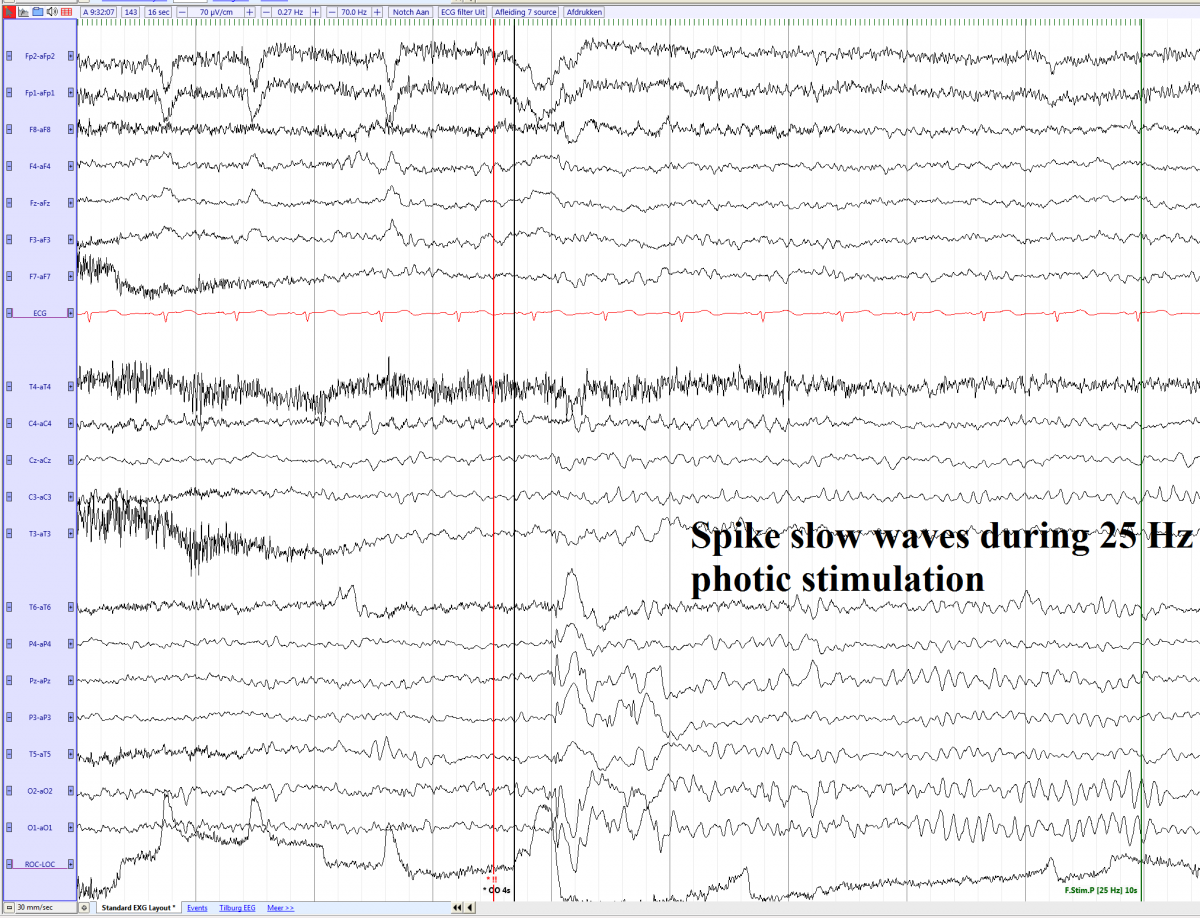Photoparoxysmal response
From EEGpedia
- Epileptiform discharges provoked by intermittent photic stimulation (flickering light)
- Classfied in four types of photoparoxysmal response according to Waltz[1]:
- Waltz 1: Spikes within the occipital rhythm
- Waltz 2: Parieto-occipital spikes with a biphasic slow wave
- Waltz 3: Parieto-occipital spikes with a biphasic slow wave and spread to the frontal region
- Waltz 4: Generalized spikes and wave or polyspikes and wave
Clinical relevance
- Photoparoxysmal responses are frequently found in nonepileptic children.
- The prevalence of photosensitivity in nonepileptic individuals ranges from 0.5 to 8.9% of the population and rarely evolve into epilepsy
- Only generalized paroxysmal epileptiform discharges (Waltz 4) are clearly linked to epilepsy.
- The majority of individuals with photosensitive seizures does not need anticonvulsant therapy
- Most effective treatment is avoidance of provoking stimulus.
- Photosensitive epilepsy is also linked to headache.
Waltz 2 photoparoxysmal respons in a 11 year old girl, bilateral spike slow wave in parieto-occipital reagions (source)

Notes
- ↑ Waltz S, Christen H-J, Doose H: The different patterns of the photoparoxysmal response a genetic study. Electroencephalogr Clin Neurophysiol 1992;83:138-145